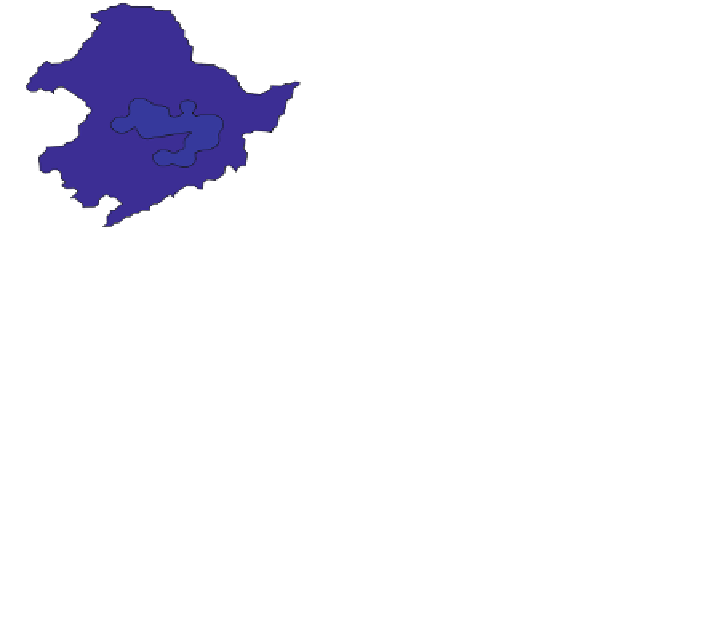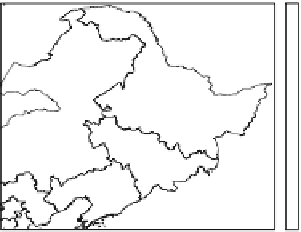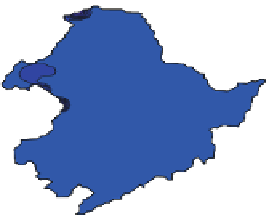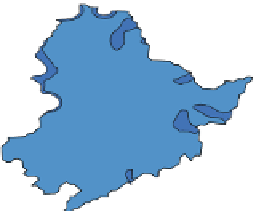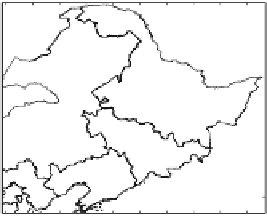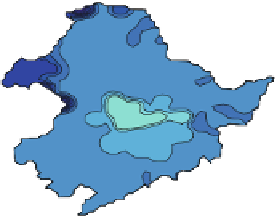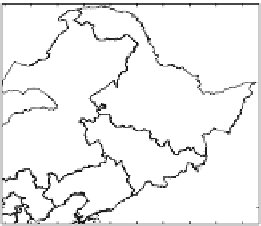Geography Reference
In-Depth Information
(a)
80
52
(b)
1000
52
60
50
50
800
48
40
48
600
46
46
20
44
400
44
0
42
42
200
−20
40
40
0
116
118
120
122
124
126
128
130
132
134
116 118
120 122
124
126
128
130
132
134
80
80
(d)
(c)
52
52
60
60
50
50
40
40
48
48
46
46
20
20
44
44
0
0
42
42
−20
−20
40
40
116
118
120
122
124
126
128
130
132
134
116
118 120 122
124 126 128
130 132 134
Fig. 4.7 Difference between the latent heat flux in Northeast China in 2010 and 2030 under
different scenarios (W/m
2
). a Spatial pattern of the latent heat flux in 2010, b Difference of the
latent heat flux between 2010 and 2030 under the BAU scenario, c Difference of the latent heat
flux between 2010 and 2030 under the REG scenario, d Difference of the latent heat flux between
2010 and 2030 under the CES scenario
up land. While it will increase most slightly in Liaohe Plain, Liaodong Peninsula,
and southern part of Changbai Mountains, where the cultivated land will mainly
change into forests or grassland and the decreased albedo will substantially increase
the evaporative flux. In summary, in the regions of returning cultivated land to
forests, the forest expansion will increase the evapotranspiration, increase the latent
heat flux, decrease the sensible heat flux, and consequently lead to the decrease of
the near-surface temperature (Deng et al.
2010d
). While in the regions of urbani-
zation, the decrease of evapotranspiration due to conversion from cultivated land
into urban and built-up land will lead to significant decrease of latent heat flux and
obvious increase of sensible heat flux, which is the main cause of the near-surface
temperature rise (Liu
2011
).
The difference in the change of the latent heat flux and sensible heat flux under
the three scenarios is mainly due to the difference in the land use change, espe-
cially the difference in cultivated land change. The simulation results in this study
suggest that more cultivated land will convert into urban and built-up land in the
regions around cities under the REG scenario, while more cultivated land will
convert into forests in the regions far from cities under the CES scenario. All these
conversions will lead to obvious vegetation cover change, which will further lead
to significant spatial heterogeneity of the latent heat flux and sensible heat flux.
